How to disable read receipt requests widely for senders from outside organizations in Microsoft 365
Privacy is the key and it’s not only in our private life but also in business. If you using Gmail (Google Workplace) for your business, something called read receipt is an odd thing.
Many businesses however are using solutions from Microsoft called Microsoft 365 Business (in various plans).
Microsoft, in their subscription service, provides a lot of useful functionalities, but there are some functions, that are heading back to times when Microsoft Outlook started gaining popularity (Microsoft Office 97).
Through these functionalities there was one, requesting a receipt sent back to the sender when the recipient read an email.
As good as it sounds, this simple functionality comes with a headache when we don’t want to let others that we read their email and simply ignored it until the point when we want to deal with it.
When Outlook mostly asks you if you want to get this feature enabled or not, sometimes you may forget that it’s there and this will put you in trouble. For business, this may set you as an unreliable person if not even worse if we decide to play the card that: “I haven’t read your email yet” or “I haven’t received it”.
The best solution is to have this option turned off, but in the organisation, you cannot control all user settings.
If you got Microsoft 365 subscription and got administrator rights, you can put a simple rule to block in Exchange (a part responsible for managing emails) any requests for reading receipts and here is how.
I will be looking into blocking it only for people from an outside organisation, as inside this may be a sort of useful feature.
Firstly, we need to head to Exchange admin centre.
From there we need to head to the section called Mail flow > Rules.
From the screenshot above you already see that I got a set rule called Disable Read Receipt which is set with the highest priority (0) and it looks as below.
To add this on our end, we need to click + Add a rule button on the top and from New transport rule head through the configuration as follows.
We are setting the name of the rule (like Disable Read Receipt) and selecting to who this rule will apply. In section Apply this rule if we select from dropdown box The sender.
From the dropdown on the right, we need to decide, if this applies to people from an outside organisation (external) and/or inside (internal).
In an additional part of the setup, we select our preference. In that case in select sender location, from the dropdown box, I selected Outside the organization and saved that using the blue button on the bottom.
Once we got this done we head to section Do the following from which, from the first dropdown box we select Modify the message properties.
From other dropdown boxes, we select to remove a message header and from the additional part of the setup, in the message header part type as follows:
Disposition-Notification-To
We save this part by clicking the save button at the bottom.
Most of the rule is set and looks as on the above.
We can add here some exclusions if needed, but if not, we click Next to go to the next step.
In next step, set rule settings, we already got set Rule mode to Enforce. Unless we want to test it first, we click on the next button located at the bottom.
The last step is just for a review before we click Finish.
As you will notice, every new rule set receives the next available priority number. This type of rule we would like to have this on the top of our rule list.
By selecting our rule and using the ^ Move up button we push it to be number one (Priority 0).
In such a way, all is set.
If somebody will send us, from an outside organisation, a message that requires a read receipt, before it’s delivered to our mailbox, this requirement is removed.
It’s a small, but very useful rule worth having.
Useful? Let me know.
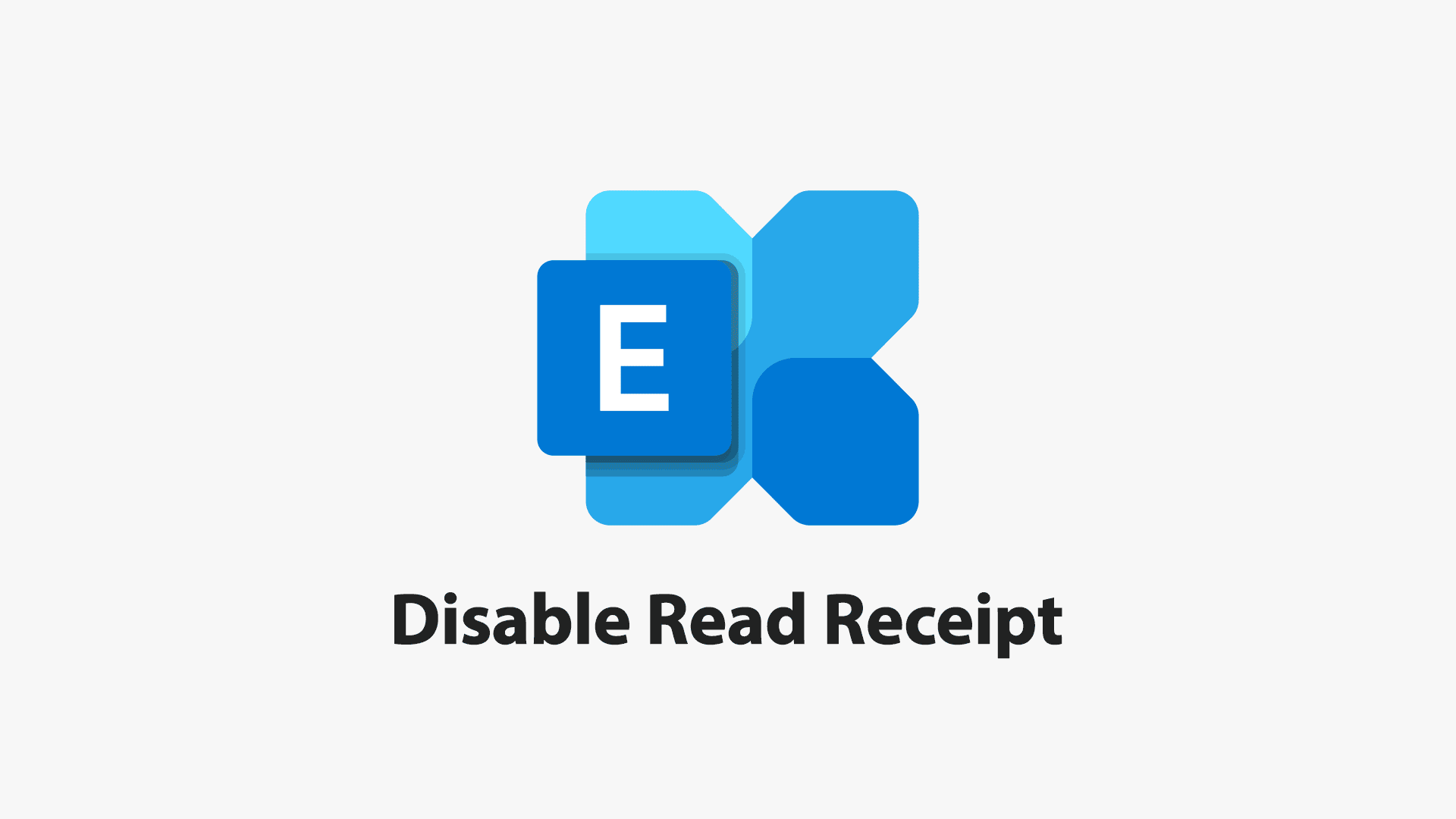



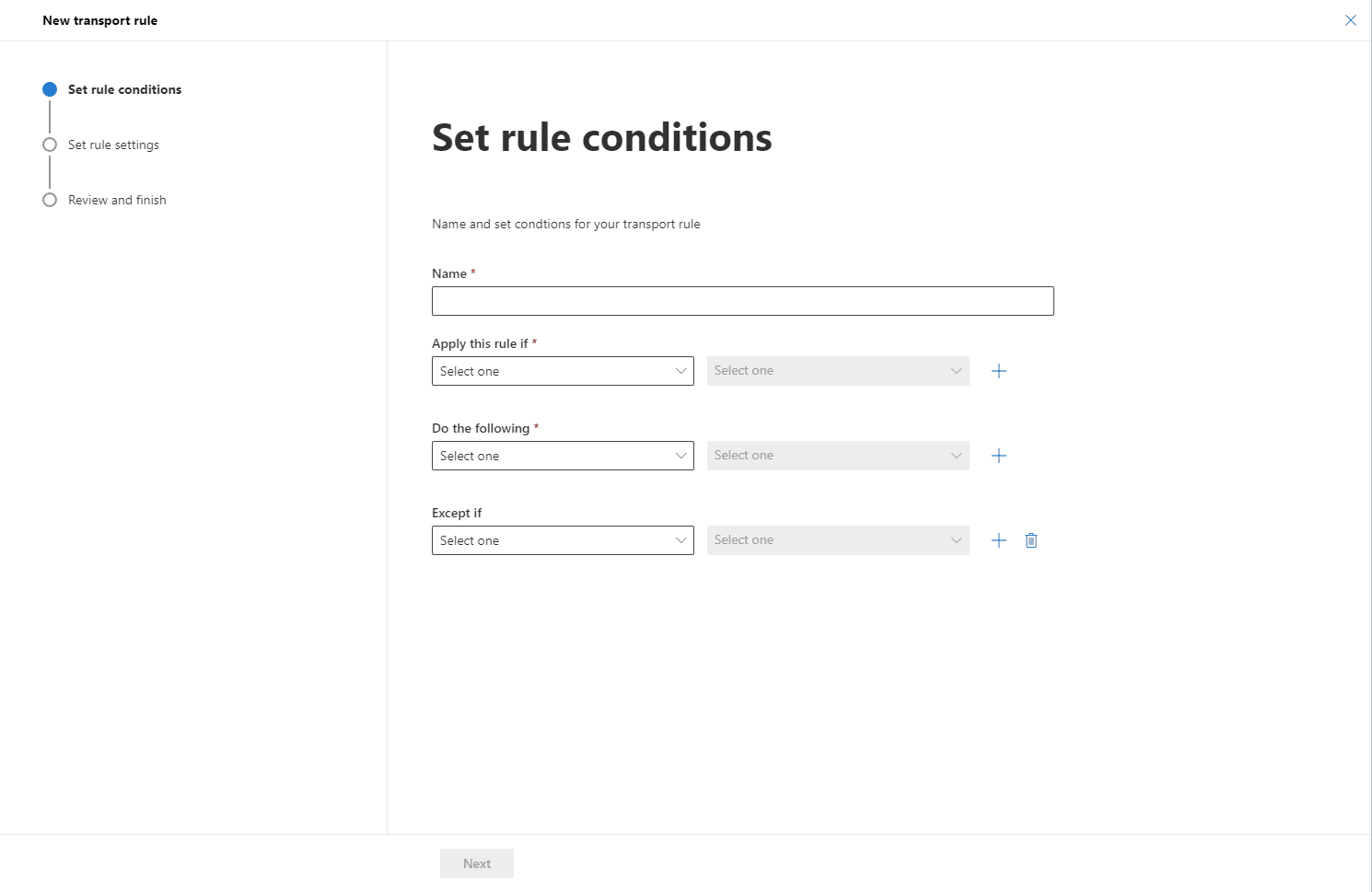
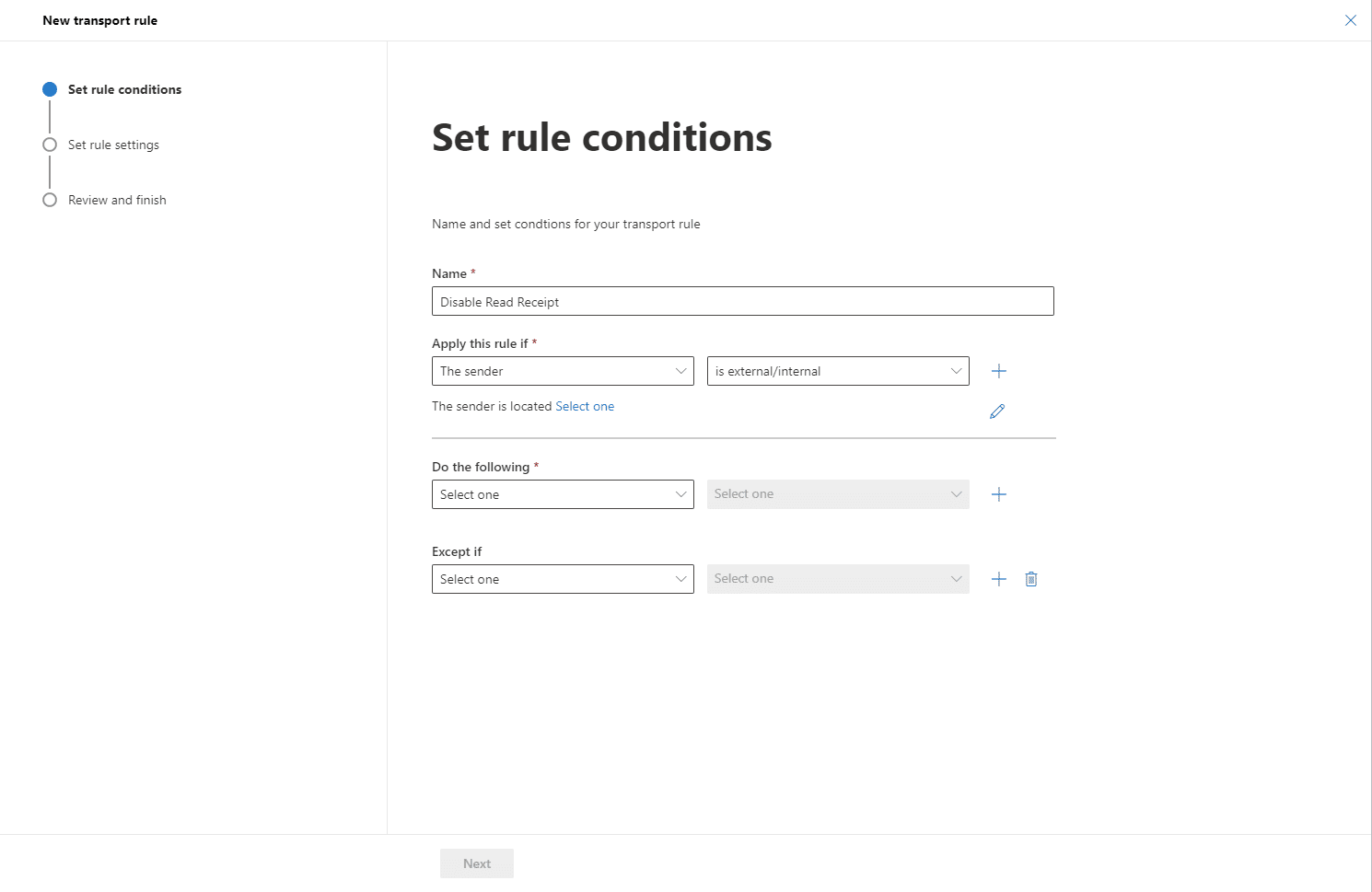

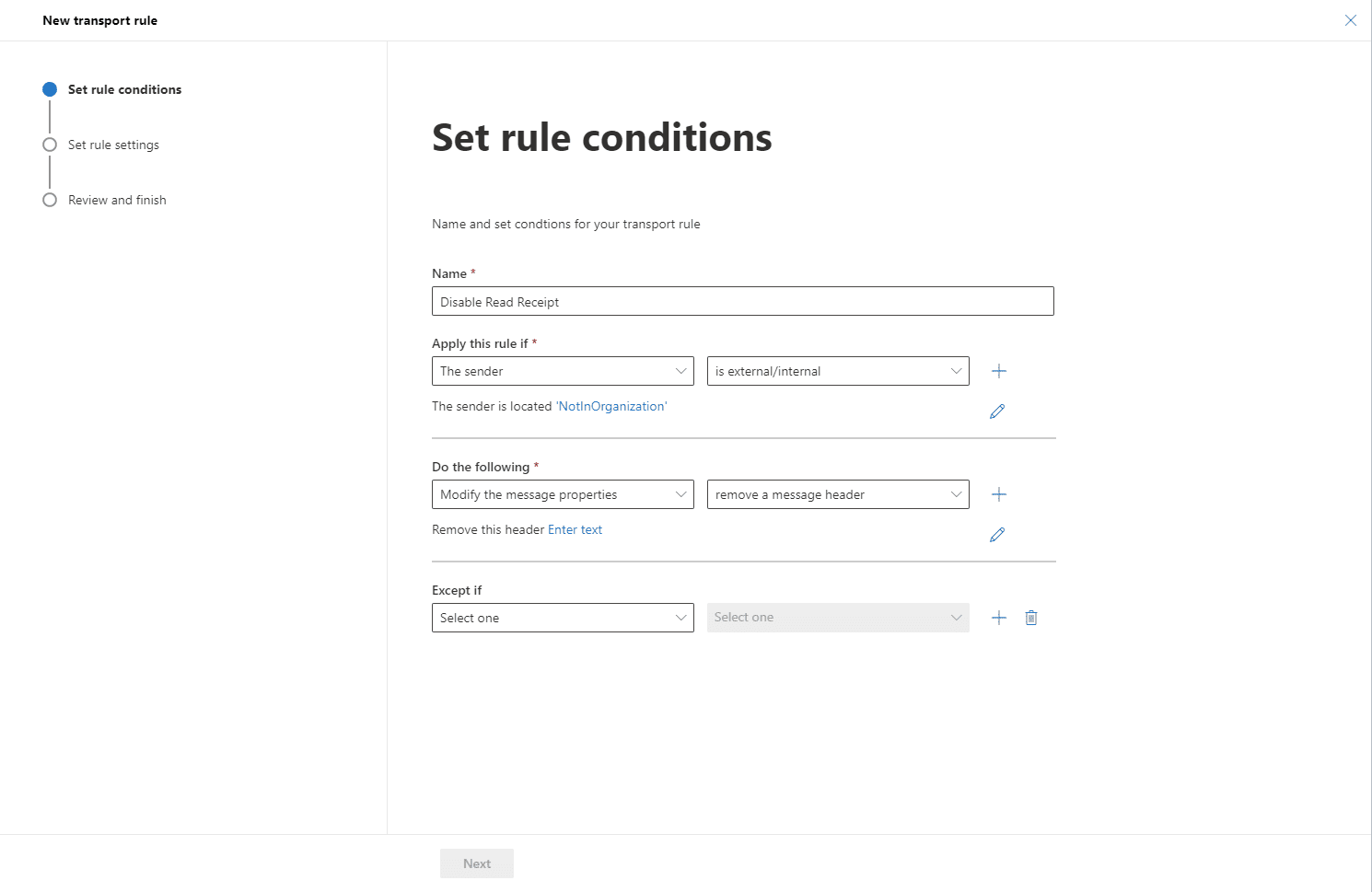


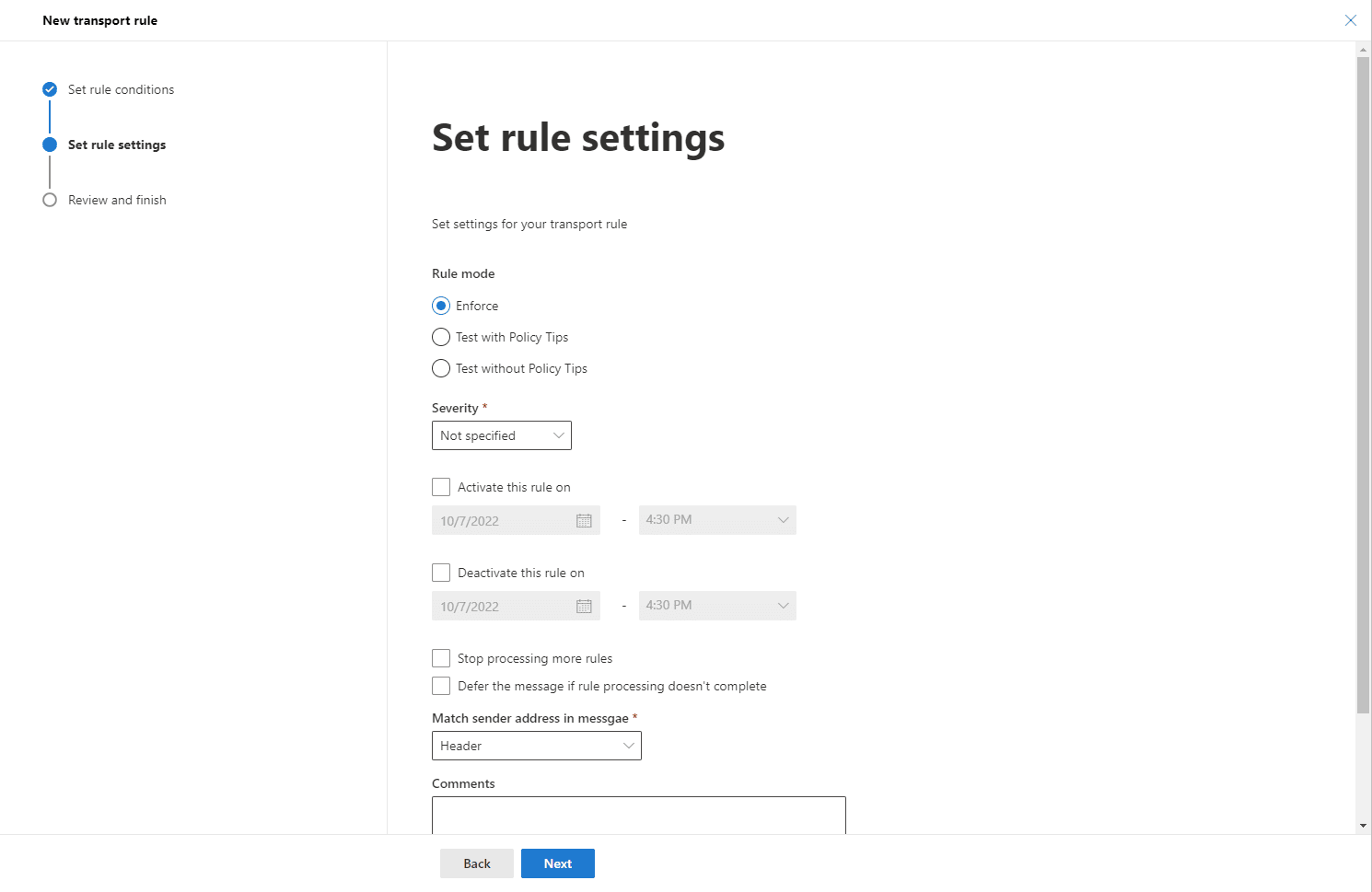






Comments & Reactions